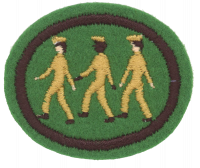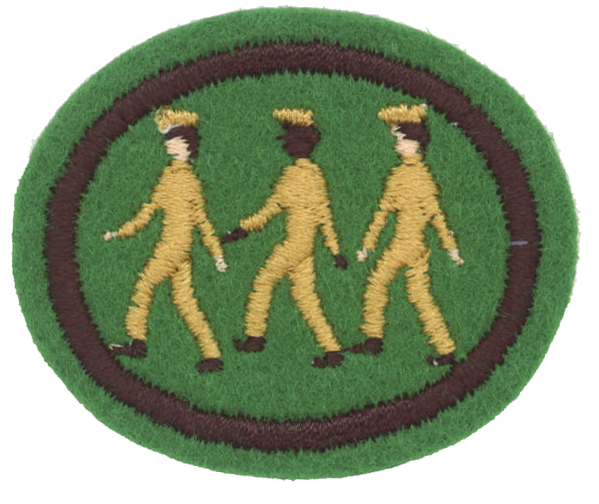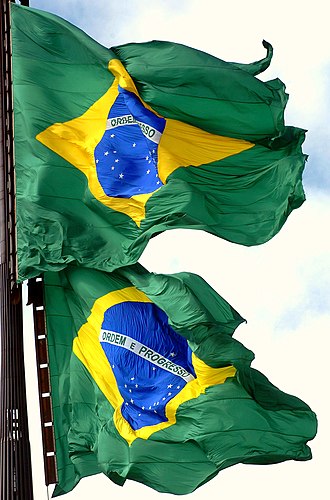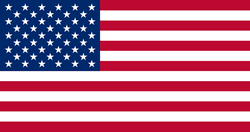Difference between revisions of "AY Honors/Drilling & Marching/Answer Key/es"
(Created page with "{{clear}}") |
|||
| (25 intermediate revisions by 2 users not shown) | |||
| Line 1: | Line 1: | ||
| − | + | {{HonorSubpage}} | |
| − | |||
| − | {{ | ||
| − | |||
| − | |||
| − | |||
| − | |||
| − | |||
| − | |||
| − | |||
| − | }} | ||
| − | |||
| − | |||
| − | |||
| − | |||
| − | |||
| − | < | + | <!--{{Honor_Master|honor=Drilling & Marching|master=Recreation}}--> |
<section begin="Body" /> | <section begin="Body" /> | ||
{{ansreq|page={{#titleparts:{{PAGENAME}}|2|1}}|num=1}} | {{ansreq|page={{#titleparts:{{PAGENAME}}|2|1}}|num=1}} | ||
| Line 152: | Line 137: | ||
{{ansreq|page={{#titleparts:{{PAGENAME}}|2|1}}|num=4d}} <!--T:26--> | {{ansreq|page={{#titleparts:{{PAGENAME}}|2|1}}|num=4d}} <!--T:26--> | ||
<noinclude></noinclude> | <noinclude></noinclude> | ||
| − | |||
<noinclude></noinclude> | <noinclude></noinclude> | ||
| Line 158: | Line 142: | ||
{{ansreq|page={{#titleparts:{{PAGENAME}}|2|1}}|num=4e}} <!--T:27--> | {{ansreq|page={{#titleparts:{{PAGENAME}}|2|1}}|num=4e}} <!--T:27--> | ||
<noinclude></noinclude> | <noinclude></noinclude> | ||
| − | |||
<noinclude></noinclude> | <noinclude></noinclude> | ||
| Line 164: | Line 147: | ||
{{ansreq|page={{#titleparts:{{PAGENAME}}|2|1}}|num=4f}} <!--T:28--> | {{ansreq|page={{#titleparts:{{PAGENAME}}|2|1}}|num=4f}} <!--T:28--> | ||
<noinclude></noinclude> | <noinclude></noinclude> | ||
| − | |||
<noinclude></noinclude> | <noinclude></noinclude> | ||
| Line 170: | Line 152: | ||
{{ansreq|page={{#titleparts:{{PAGENAME}}|2|1}}|num=4g}} <!--T:29--> | {{ansreq|page={{#titleparts:{{PAGENAME}}|2|1}}|num=4g}} <!--T:29--> | ||
<noinclude></noinclude> | <noinclude></noinclude> | ||
| − | |||
<noinclude></noinclude> | <noinclude></noinclude> | ||
| Line 176: | Line 157: | ||
{{ansreq|page={{#titleparts:{{PAGENAME}}|2|1}}|num=4h}} <!--T:30--> | {{ansreq|page={{#titleparts:{{PAGENAME}}|2|1}}|num=4h}} <!--T:30--> | ||
<noinclude></noinclude> | <noinclude></noinclude> | ||
| − | |||
<noinclude></noinclude> | <noinclude></noinclude> | ||
| Line 182: | Line 162: | ||
{{ansreq|page={{#titleparts:{{PAGENAME}}|2|1}}|num=4i}} <!--T:31--> | {{ansreq|page={{#titleparts:{{PAGENAME}}|2|1}}|num=4i}} <!--T:31--> | ||
<noinclude></noinclude> | <noinclude></noinclude> | ||
| − | |||
<noinclude></noinclude> | <noinclude></noinclude> | ||
| Line 188: | Line 167: | ||
{{ansreq|page={{#titleparts:{{PAGENAME}}|2|1}}|num=4j}} <!--T:32--> | {{ansreq|page={{#titleparts:{{PAGENAME}}|2|1}}|num=4j}} <!--T:32--> | ||
<noinclude></noinclude> | <noinclude></noinclude> | ||
| − | |||
<noinclude></noinclude> | <noinclude></noinclude> | ||
| Line 194: | Line 172: | ||
{{ansreq|page={{#titleparts:{{PAGENAME}}|2|1}}|num=4k}} <!--T:33--> | {{ansreq|page={{#titleparts:{{PAGENAME}}|2|1}}|num=4k}} <!--T:33--> | ||
<noinclude></noinclude> | <noinclude></noinclude> | ||
| − | |||
<noinclude></noinclude> | <noinclude></noinclude> | ||
| Line 200: | Line 177: | ||
{{ansreq|page={{#titleparts:{{PAGENAME}}|2|1}}|num=4l}} <!--T:34--> | {{ansreq|page={{#titleparts:{{PAGENAME}}|2|1}}|num=4l}} <!--T:34--> | ||
<noinclude></noinclude> | <noinclude></noinclude> | ||
| − | |||
<noinclude></noinclude> | <noinclude></noinclude> | ||
| Line 207: | Line 183: | ||
{{ansreq|page={{#titleparts:{{PAGENAME}}|2|1}}|num=5}} | {{ansreq|page={{#titleparts:{{PAGENAME}}|2|1}}|num=5}} | ||
<noinclude></noinclude> | <noinclude></noinclude> | ||
| − | <!-- 5. | + | <!-- 5. Ejecutar correctamente los siguientes movimientos: --> |
<noinclude></noinclude> | <noinclude></noinclude> | ||
{{ansreq|page={{#titleparts:{{PAGENAME}}|2|1}}|num=5a}} | {{ansreq|page={{#titleparts:{{PAGENAME}}|2|1}}|num=5a}} | ||
<noinclude></noinclude> | <noinclude></noinclude> | ||
| − | |||
<noinclude></noinclude> | <noinclude></noinclude> | ||
| Line 217: | Line 192: | ||
{{ansreq|page={{#titleparts:{{PAGENAME}}|2|1}}|num=5b}} <!--T:36--> | {{ansreq|page={{#titleparts:{{PAGENAME}}|2|1}}|num=5b}} <!--T:36--> | ||
<noinclude></noinclude> | <noinclude></noinclude> | ||
| − | |||
| − | + | {{clear}} | |
| − | |||
| − | |||
| − | |||
| − | |||
| − | |||
| − | |||
| − | |||
{{clear}} | {{clear}} | ||
| Line 234: | Line 201: | ||
{{ansreq|page={{#titleparts:{{PAGENAME}}|2|1}}|num=5c}} <!--T:39--> | {{ansreq|page={{#titleparts:{{PAGENAME}}|2|1}}|num=5c}} <!--T:39--> | ||
<noinclude></noinclude> | <noinclude></noinclude> | ||
| − | |||
{{clear}} | {{clear}} | ||
| Line 242: | Line 208: | ||
{{ansreq|page={{#titleparts:{{PAGENAME}}|2|1}}|num=5d}} <!--T:41--> | {{ansreq|page={{#titleparts:{{PAGENAME}}|2|1}}|num=5d}} <!--T:41--> | ||
<noinclude></noinclude> | <noinclude></noinclude> | ||
| − | |||
{{clear}} | {{clear}} | ||
| Line 250: | Line 215: | ||
{{ansreq|page={{#titleparts:{{PAGENAME}}|2|1}}|num=5e}} <!--T:43--> | {{ansreq|page={{#titleparts:{{PAGENAME}}|2|1}}|num=5e}} <!--T:43--> | ||
<noinclude></noinclude> | <noinclude></noinclude> | ||
| − | |||
{{clear}} | {{clear}} | ||
| Line 262: | Line 226: | ||
{{ansreq|page={{#titleparts:{{PAGENAME}}|2|1}}|num=5f}} <!--T:47--> | {{ansreq|page={{#titleparts:{{PAGENAME}}|2|1}}|num=5f}} <!--T:47--> | ||
<noinclude></noinclude> | <noinclude></noinclude> | ||
| − | |||
{{clear}} | {{clear}} | ||
| − | + | {{clear}} | |
<noinclude></noinclude> | <noinclude></noinclude> | ||
| Line 272: | Line 235: | ||
{{ansreq|page={{#titleparts:{{PAGENAME}}|2|1}}|num=5g}} <!--T:49--> | {{ansreq|page={{#titleparts:{{PAGENAME}}|2|1}}|num=5g}} <!--T:49--> | ||
<noinclude></noinclude> | <noinclude></noinclude> | ||
| − | |||
<noinclude></noinclude> | <noinclude></noinclude> | ||
| Line 278: | Line 240: | ||
{{ansreq|page={{#titleparts:{{PAGENAME}}|2|1}}|num=5h}} <!--T:50--> | {{ansreq|page={{#titleparts:{{PAGENAME}}|2|1}}|num=5h}} <!--T:50--> | ||
<noinclude></noinclude> | <noinclude></noinclude> | ||
| − | |||
<noinclude></noinclude> | <noinclude></noinclude> | ||
| Line 285: | Line 246: | ||
{{ansreq|page={{#titleparts:{{PAGENAME}}|2|1}}|num=6}} | {{ansreq|page={{#titleparts:{{PAGENAME}}|2|1}}|num=6}} | ||
<noinclude></noinclude> | <noinclude></noinclude> | ||
| − | <!-- 6. | + | <!-- 6. Explicar y demostrar cómo usar, exhibir y cuidar la bandera nacional, incluyendo la manera correcta de doblarla. --> |
| − | === | + | ===Protocolo de bandera=== |
| − | {{: | + | {{:AY Honors/Flag protocol/es}} |
| − | |||
| − | |||
===Doblar=== | ===Doblar=== | ||
| − | {{: | + | {{:AY Honors/Flag folding/es}} |
<noinclude></noinclude> | <noinclude></noinclude> | ||
| Line 298: | Line 257: | ||
<noinclude></noinclude> | <noinclude></noinclude> | ||
==Referencias== | ==Referencias== | ||
| − | |||
<noinclude></noinclude> | <noinclude></noinclude> | ||
| − | + | {{CloseHonorPage}} | |
Latest revision as of 00:27, 26 July 2022
Nivel de destreza
1
Año
1976
Version
03.10.2025
Autoridad de aprobación
Asociación General
1
- Orden:Ayuda a mantener una unidad organizada.
- Moral: Entrenamiento de disciplina y unidad de grupo.
- Disfrute: Actividad divertida, promueve el uso de la imaginación.
- Compañerismo: Ayuda a aprender a tomar órdenes y seguirlas.
- Liderazgo: Ayuda a aprender a dar órdenes y generar la confianza.
- Autocontrol: Prestar atención al líder.
- Respeto: Respeto por los derechos de los demás.
2
2a
La formación es el arreglo de los elementos de una formación de marchas de Conquistadores en cualquier forma prescrita.
2b
La línea es una formación en la que los elementos están uno al lado del otro. En la línea de un club, los Conquistadores en cada unidad están uno al lado del otro con las unidades una detrás de la otra.
2c
Una rango es una línea que solo tiene un elemento de profundidad.
2d
Un intervalo es la distancia entre las personas situadas una junto a la otra.
2e
Se forma una columna cuando las personas se colocan una detrás de la otra.
2f
Un fila es una sola columna que tiene como frente un solo elemento.
2g
La distancia es el espacio entre las personas dentro de una columna (de adelante hacia atrás).
2h
El comando de cobertura se usa para alinearse con la persona frente a usted mientras mantiene la distancia correcta. La distancia de mantenimiento podría ser exhibida por la elevación del brazo izquierdo a un nivel o ángulo de 90 grados, no al nivel del hombro de la persona al frente.
2i
Flanco es el lado derecho o izquierdo de cualquier formación desde el punto de vista de alguien dentro de esa formación.
2j
La cadencia (o ritmo) es el ritmo uniforme en el que se ejecuta un movimiento, o el número de pasos o conteos por minuto en el que se ejecuta el movimiento.
3
3a
- El descanso de desfile es el más «estricto» de estos tres comandos. Puede ser llamado solo desde la posición de Firme. En los comandos de preparación, la posición de descanso de desfile se debe ejecutar cuando se uno está en descanso en lugar o descanso. Los Conquistadores ejecutan el descanso de desfile moviendo la pierna izquierda hacia afuera (de modo que los pies están separados aproximadamente ocho pulgadas) y colocando ambas manos en la parte inferior de la espalda, con la mano derecha en la parte superior de la izquierda y los pulgares unidos. La cabeza y los ojos deben mantenerse mirando hacia adelante, porque descanso de desfile es simplemente una forma de firme más relajada. «Descanso en lugar», «descanso», o «descanso en desfile» y «posición para la oración» son todos comandos que se pueden dar desde esta posición.
- Descansar en lugar es un poco más relajado que el descanso de desfile. Para ejecutar este comando, ejecute el descanso de desfile como se describió anteriormente; sin embargo, la cabeza y los ojos deben seguir al comandante en todo momento. Algunos clubes pueden permitir que las manos se relajen durante el «descanso en lugar», pero esto no está permitido según el Manual de marchas de la División Norteamericana. Las órdenes de «descanso» y «descanso de desfile» pueden darse desde esta posición.
- El descanso es más relajado todavía. El pie derecho debe permanecer «anclado» en su lugar al suelo. Los Conquistadores pueden moverse (excepto el pie derecho), pero deben permanecer en silencio y de pie. El comando de «descanso» puede darse desde esta posición.
3b
3c
3d
4
4a
4b
4c
4d
4e
4f
4g
4h
4i
4j
4k
4l
5
5a
5b
5c
5d
5e
5f
5g
5h
6
Protocolo de bandera
Protocolo de la bandera define la ubicación correcta, la manipulación y el uso de las banderas. Algunos países han añadido ciertos protocolos en su sistema de la ley, mientras que otros prefieren tener «directrices» sin consecuencias civiles o penales.
- Directrices generales
Las directrices generales son usualmente aceptadas universalmente.
Una gran parte del protocolo de la bandera se deriva del sentido común. Es decir, utilizándolo como una cubierta de mesa o papel de regalo son usos incorrectos. Debe ser tratado con respeto. Muchos países consideran que firmar una bandera de una falta de respeto; agregar de una orilla sería más apropiado. Prender con alfileres de coser o artículos a una bandera también sería irrespetuoso.
- En un mástil o poste
La bandera de honor, que es la bandera de la nación en la mayoría de los casos, se vuela en el mástil central, si es posible. Para un observador, estaría al extremo izquierdo. Si se utilizan más de tres banderas, la posición correcta totalmente a la izquierda desde el punto de vista de un observador. Una bandera adicional puede ser colocado en el lado derecho, pero no es necesario. Cuando se cruzan dos astas, la posición de honor es la bandera que termina en el lado izquierdo desde el punto de vista de un observador (el asta será entonces terminará a la derecha).
Cuando se cruzan dos postes, la posición de honor es la bandera que termina en el lado izquierdo desde el punto de vista de un observador (el asta, por lo tanto, terminará en el derecho).
En un semicírculo, la posición de honor es el centro. Si un círculo completo se utiliza en frente de una entrada a una arena o estadio, la posición de honor está justo en frente de la entrada. Si se usa para forrar las paredes de la arena, la bandera debe ser colocada directamente en frente de la entrada.
- Colgar
Cuando pusta horizontalmente, como de un asta, la bandera debe estar orientado de manera que el cantón es la más cercana a la parte superior del asta. Si colgado contra una pared, el cantón debe ser colocado en la esquina superior e izquierda desde el punto de vista del observador.
Cuando colgado verticalmente, banderas deben rotarse para que el cantón está más cerca de la parte superior del asta. Si se muestra la bandera contra una pared, el cantón debe aparecer en la esquina superior e izquierda, que por cierto requiere que la bandera sea girada y volteada respecto a su orientación horizontal.
- Otros lugares
En un vehículo de la bandera debe ser fijada de forma segura a la parte delantera y derecha del chasis.
Cuando se coloca con un podio o en un lugar de culto la bandera debe colgar directamente detrás o en un asta a la derecha del orador, desde el punto de vista de la audiencia.
Cuando se lleva en una fila la bandera de honor está al frente.
- Varias banderas
Cuando hay muchas banderas de diferentes naciones, la bandera del país anfitrión debe ser colocado a la izquierda, con el resto siguiendo en orden alfabético utilizando el idioma del país anfitrión.
Doblar
- Tenga dos personas en cada lado de la bandera, agarrando una esquina en cada mano.
- Doble la bandera en la mitad dos veces, en sentido longitudinal.
- Empiece en el lado de las rayas, doble una esquina en al lado opuesto, formando un triángulo.
- Repita este doblar triangular hasta que sólo una pequeña franja de las estrellas se vea.
- Meta esta parte en el triángulo.
Asegúrese que la bandera no toque el suelo, mientras se dobla.




